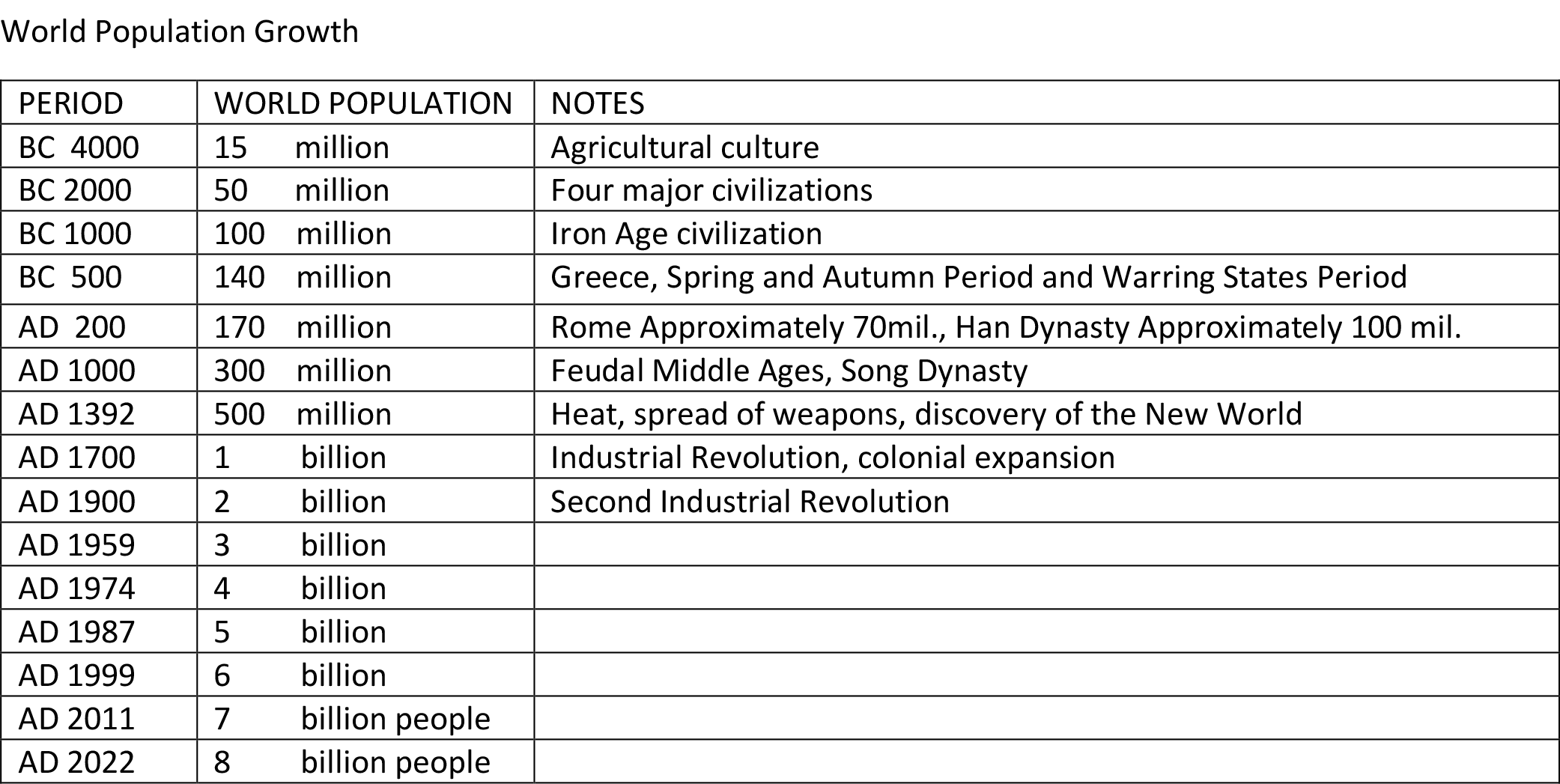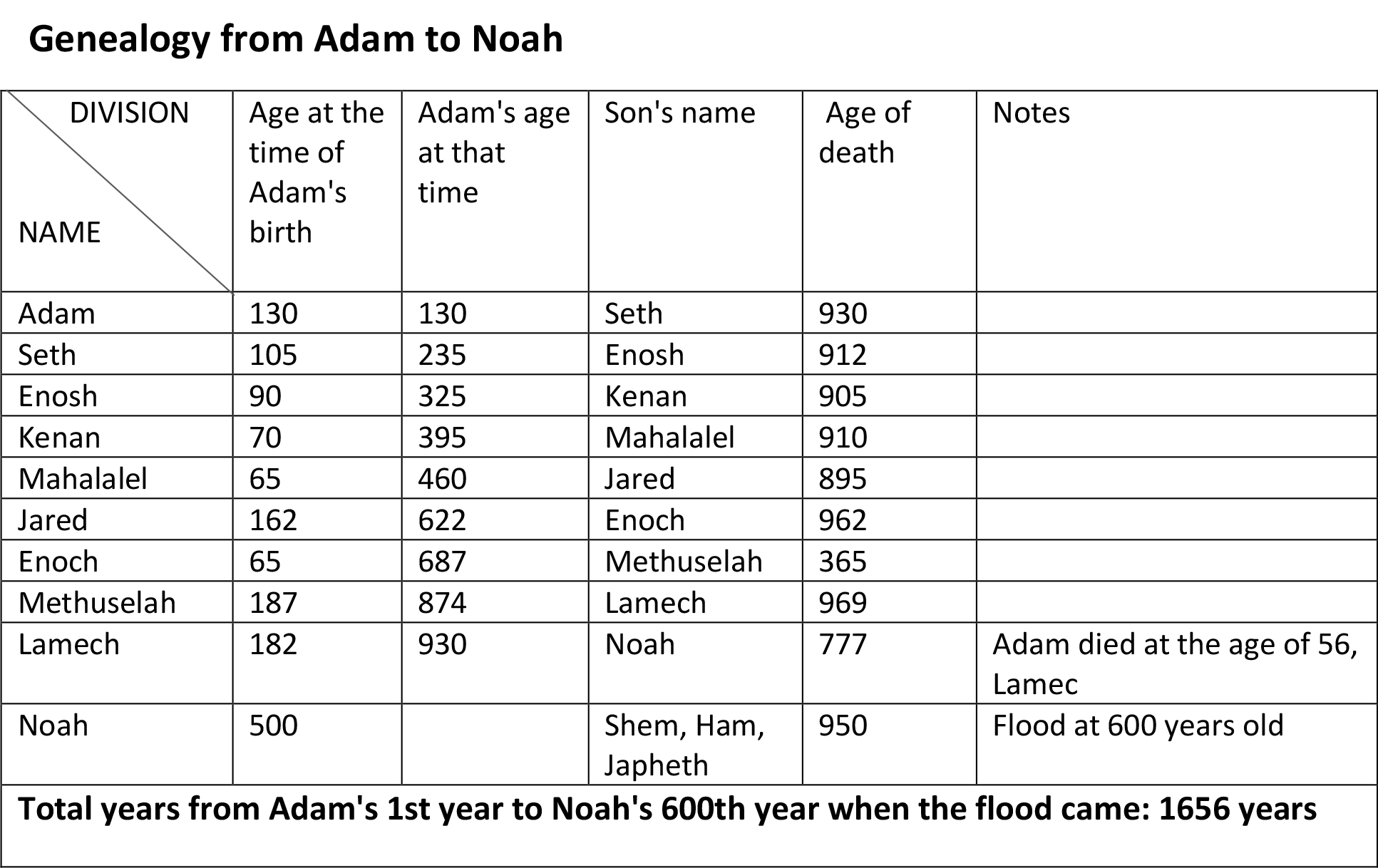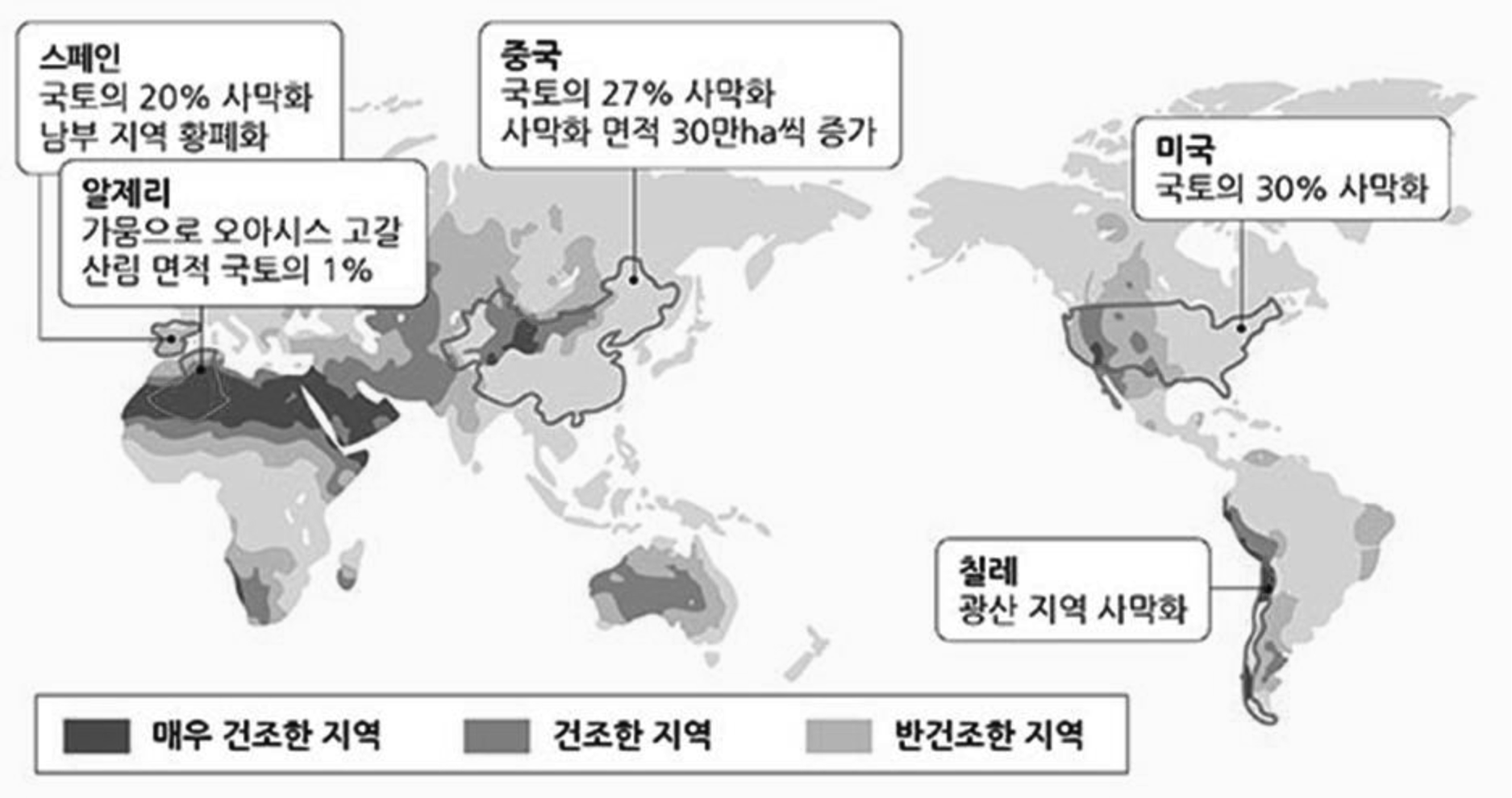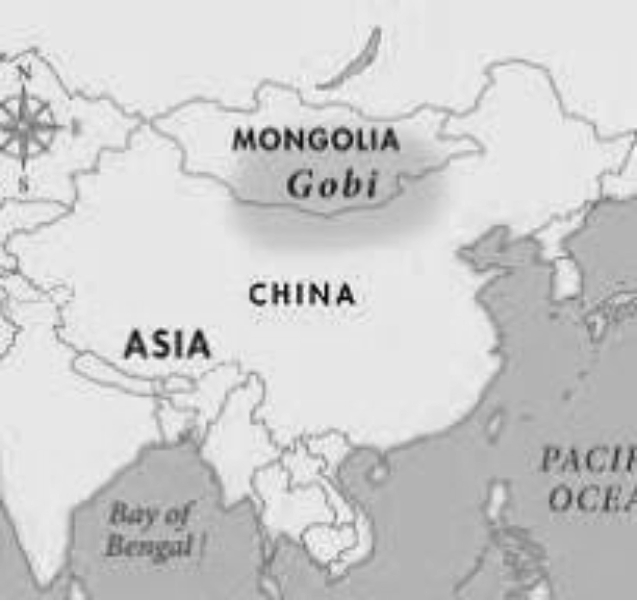5. Population
Population refers to the number of people living in a country or region. Population is determined by various factors such as death, birth, marriage, divorce, and family planning. Sociology, economics, and geography also analyze the movement of population and its causes.
Depending on the country, a census is conducted every few years to find out the number of people living in that country. This census is very important because it can be directly related to policy.
The world population was about 210 to 250 million around 30 AD, but it increased to about 550 million in 1650. It was about 620 million around 1750, and about 1.2 billion in 1850. It was recorded as about 2.4 billion in 1950, 3.97 billion in 1975, and 6.05 billion in 2000.
The population growth rate varies depending on the era. The world’s population, which took more than 16 centuries from around 30 AD to 1650, doubled again in the two centuries from 1650 to 1850, and then doubled again in less than half a century from 1975 to 2000.
The history of population includes great increases and decreases. For example, England’s population was about 1 million around AD 0, but it decreased to about 3 million around AD 400, and then to about 1.5 million around AD 800. Also, some regions of Europe lost one-third of their population at once due to the Black Death. Looking at the entire period, the population has maintained a long-term quasi-stagnancy without a great increase. However, since the early modern period, the population has continued to grow. The population began to increase rapidly in the modern era, and has shown explosive growth in modern times. The future population change is not exact, but there are statistics that say it could reach 9 billion by 2050. This is because health technology has improved, it is expanding to developing countries, and food supply has improved due to the green revolution. However, precise statistics are not yet possible because the birth rate is decreasing in some developed countries such as Europe.
Sometimes, the population increases excessively, and sometimes it decreases excessively, which can cause problems with food, clothing, and shelter. If the population increases excessively, there may be an abundance of labor, but immediate problems with food, clothing, and shelter may arise. These problems are mainly seen in developing countries. On the other hand, if the population decreases excessively, the labor force will decrease and the aging population will become more severe, which can cause major disruptions in national management. These problems are most common in developed countries where people are reluctant to have children and meet basic food, clothing, and shelter needs.
Population is one of the production factors along with labor and capital. The size of a country’s population is very important from a political and military perspective, as well as an economic perspective. In other words, the size of a region’s population is related to the amount of production and consumption in that region, and these are positively correlated. The reason China used human wave tactics during the Korean War, and the reason the United States and Japan rushed to approach China, was because they valued the market of China’s large population of 1.4 billion. Today, in the development stage of production technology, there are more and more production sectors that are difficult to establish in countries with small populations. In other words, production sectors that require large-scale production are difficult to operate in countries with small domestic markets. This situation can be seen especially in heavy chemical industries such as automobile manufacturing and publishing. The countries in Western Europe formed the EEC, and the reason the UK itself formed the Commonwealth of Nations is also due to population.
Population Distribution If the world’s population were distributed evenly across the landmass, the density would be 50 people per square kilometer, but the actual population distribution is unbalanced. Half of the world’s population is concentrated in the monsoon zone of Asia, and the next most densely populated areas are northwestern Europe and the northeastern region of North America. When these regions are combined, four-fifths of the population is concentrated in an area that has less than 10% of the land area. In terms of population distribution in relation to climate, nearly 50% of the population is concentrated in the most pleasant temperate zone. Comparing the Northern and Southern Hemispheres, we can see that the population is concentrated in the Northern Hemisphere, especially in the area between 20 and 60 degrees north latitude. Population reveals the geographical differences on Earth.
Some places are continents with few people, while others are already overcrowded, and some places have developed civilizations while others still have primitive cultures. This shows the crucial relationship between various human groups. Meanwhile, looking at the population distribution by region according to the level of economic development, in 2000, 1.19 billion people lived in developed countries, while 4.87 billion people lived in developing countries, showing that four out of five people in the world live in developing countries. By continent, Asia is the most populous continent, accounting for 60.8% of the world’s population with 3.68 billion people, followed by Africa (1.156 billion people), Europe (730 million people), South America (520 million people), North America (500 million people), and Oceania (30 million people). The regional distribution is expected to maintain the same pattern in the future, with Africa increasing slightly while Europe and North America are expected to decrease. By country, there were 10 countries with a population of over 100 million in 2000, and this number is expected to increase to 14 countries by 2020 and 18 countries by 2050~2060.

The explanation so far has been about the distribution of the world population from the primitive era to the present, and the increase and decrease of the world population. However, when entering the Millennium Kingdom, due to the stable climate, there will be an appropriate climate anywhere on Earth, no income inequality between countries, and since desert areas will become grasslands and forests, the population will be evenly distributed throughout the world. In addition, there will be no world wars, no epidemics, and no Satan, a factor that causes stress to the Earth’s climate or people, so the population will increase. Also, since the lifespan of the population will be like the lifespan of a tree, the population will increase rapidly. Among those born around the time the Millennium Kingdom begins, there will be those who will be able to live for 1,000 years. Considering various phenomena, even 10 billion people will be able to live peacefully in the Millennium Kingdom.
Isaiah 65:20-23, ‘20 No more will there be an infant whose days are few, or an old man whose days do not last. The young one will die at the age of a hundred, and the one who does not live to be a hundred will be cursed. 21 They will build houses and live in them; they will plant vineyards and eat their fruit. 22 They will not build and someone else inhabit them; they will not plant and someone else eat them. For like the days of a tree will the days of my people be, and my chosen ones will long enjoy the work of their hands. 23 They will not labor in vain, nor bring forth fruit for disaster, for they will be the offspring of the blessed of the LORD, and their offspring after them will be like them.
6. Comparison of Genesis 5 and the Millennial Kingdom

The figures in the genealogy of Seth in Genesis 5 lived nearly a thousand years. Methuselah lived to be 969 years old. Why was it possible for them to live like this? There was plenty of clean air, clean water, and food. There was no desert at that time. However, after the flood of Noah, the age of people was reduced by half. Genesis 8:22, “While the earth remains, seedtime and harvest, cold and heat, summer and winter, day and night, will never cease.”
In Genesis 5, the climate was mild all year round, but after the flood of Noah, there would be summer and winter, heat and cold, indicating that there would be extreme climate changes.
The climate of Genesis 5 and the Millennium Kingdom are similar. That is why the human lifespan is similar. Human lifespan is a thousand years. However, the Millennium Kingdom does not mean that everyone will live a thousand years unconditionally. The deserts disappeared on Earth because the rain fell moderately and abundantly. The difference between Genesis 5 and the Millennium Kingdom is that Satan existed in Genesis 5, but he does not exist in the Millennium Kingdom.
Isaiah 65:20-22, “No more will there be in it the infant of a few days, nor the old man who does not fill out his days; the death of a hundred years old will be called a youth, but the death of a hundred years old will be accursed. They will build houses and inhabit them; they will plant vineyards and eat their fruit. They will not build and another inhabit, nor plant and another eat, for like the days of a tree shall the days of My people be, and I will make them holy.”
7. Deserts

Currently, about 1/3 of the Earth’s land is arid or semi-arid
The areas where desertification is a problem are the semi-arid areas distributed around deserts. The land in these areas is currently losing its biological production capacity or completely disappearing. Recently, the area that is becoming desertified is increasing by about 6 million hectares every year, and the number of rural population affected by this is about 17 million every year. In China, 3,500 km2 (6 times the area of Seoul) of land is becoming desertified every year. And this desertification, along with rapid industrialization, is the main cause of yellow dust.
Mongolia is also experiencing desertification. In fact, the desert that covered 40% of Mongolia’s total area until the 1990s has expanded to 78%. In particular, nomads, unlike farmers, do not have the technology to transform desert into fertile land using traditional methods, so they suffer great damage.
In particular, the Middle East (the Arabian Peninsula is a desert to begin with, so it doesn’t matter, but the problem is that desertification is progressing even in the temperate and mountainous regions of the Levant and Iran, and desertification is progressing rapidly in Central Asia, Africa, and South Asia, and among the developed countries, the United States, Australia, and Spain are in serious progress.
Currently, the deserts we know are the Sahara Desert in Africa, the second largest desert after Antarctica. It is 9.4 million km2 (3,552,000 miles2) and 4,8000 km long in the east-west direction.

The desert in China is the Gobi Desert. It is a desert in Central Asia that spans Mongolia and China. It has an area of 500,000 mi2 and a length of 1,500 km (932 mi) in the southeast-northwest direction, and 1,610 km (1,000 mi) in the southwest-northeast direction.

Currently, 1/3 of the Earth’s area is desert, but in the Millennium Kingdom, rivers will flow and flowers will bloom in these deserts. If this desert area becomes farmland, The earth’s population could be twice as large.
Isaiah 35:1-10, ‘The wilderness and the dry land will be glad, and the desert will rejoice and blossom as the rose. 2 It will blossom abundantly and rejoice with joy and singing. It will give Lebanon the glory, the splendor of Carmel and Sharon. They will see the glory of the LORD, the splendor of our God. 3 Strengthen the weak hands, and make firm the feeble knees. 4 Say to those who are fearful, ‘Be strong, do not fear; behold, your God will come with vengeance, with recompense; God will come and save you.’ 5 Then the eyes of the blind will be opened, and the ears of the deaf will be unstopped. 6 Then the lame will leap like a deer, and the tongue of the dumb will sing for joy. For waters will burst out in the wilderness, and streams in the desert. 7 The scorching desert will become a pool of water, and the thirsty ground springs of water, where jackals used to lie down. Grass and reeds and cattails will grow there. 8 And a highway will be there, and it will be called the Way of Holiness. The unclean will not pass over it, but it will be for the redeemed. The wayfaring fool will not travel on it. 9 No lion will be there, and no ravenous beast will go up there, nor will it be found there. But the redeemed will walk on it. 10 And the ransomed of the LORD will return and come to Zion with singing; everlasting joy will be on their heads; they will obtain joy and gladness, and sorrow and sighing will flee away.’
Isaiah 41:18-20, ‘I will open rivers on the bare heights, and springs in the midst of the valleys. I will make the wilderness a pool of water, and the dry ground springs of water. 19 I will plant in the wilderness the cedar, the acacia tree, the myrtle tree, and the wild olive tree; I will set in the desert the fir tree, the pine tree, and the box tree together. 20 And they will see, and I will say, The hand of the LORD is upon the bare heights, ‘And they shall know, and ponder and understand together, that it is the Lord God who made it, and the Holy One of Israel who created it.’
Isaiah 43:18-21, ‘Remember not the former things, nor consider the things of old. 19 Behold, I am doing a new thing; now it shall spring forth; shall you not know it? I am making a road in the wilderness, And rivers in the desert. 20 The beasts of the field shall honor me, The jackals and the ostriches, For I give water in the wilderness, And rivers in the desert, To give drink to My people, My chosen; 21 The people I have formed for Myself, That they shall shew forth My praise.’
Views: 1

